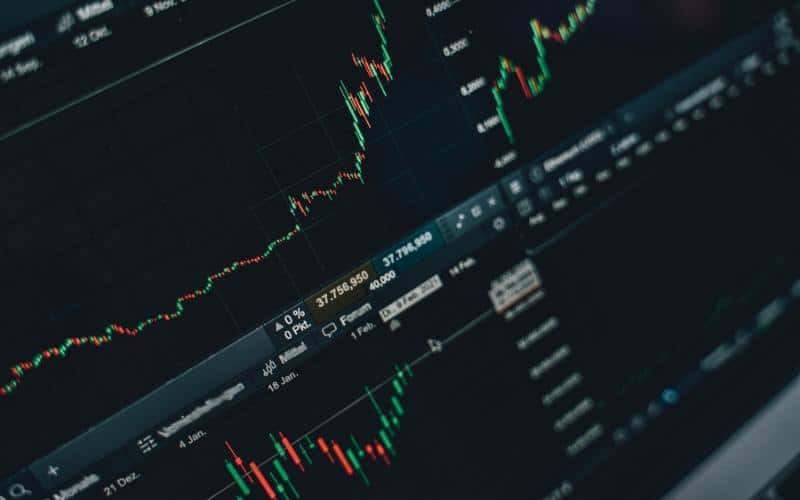Bot trading involves the use of a computer program to specify a set of instructions that will be followed in order to execute a trade. Any automated trading system or technique, no matter how simple or sophisticated must go through a number of tests before it can be put into action on the live market.

You need to be sure that your strategy can endure periods of big drawdowns when your account is at risk of being drained in the volatile crypto market. Backtesting and front-end testing can help with this.
What is backtesting?
The term “backtest” refers to the process of comparing a trading strategy or analytical method’s performance against past trading data. Crypto trading strategies that perform well in a virtual environment can then be applied in a real-world one.
Backtesting history performance does not guarantee future outcomes, but backtesting can be a dependable approach to filter the effective methods from the ineffective ones if executed appropriately. Unreliable data can still have an impact on backtesting.
How does backtesting work?
There is a lot of time and effort involved in backtesting. However, it is an essential part of establishing a successful trading strategy. It’s a way to examine how a strategy would have done if it had been tested against historical or market data. This provides a thorough overview of non-qualified tactics before putting actual money into real-world markets.
Programming the strategy into the trading platform’s unique algorithm is necessary for backtesting. The developer can incorporate some custom user variables so that the system can be customized by the trader.
There are a few things that investors look into prior to testing their ideas. Information about the asset’s predicted risk and return, as well as previous performance data, are all important components of a successful trading strategy. When backtesting a strategy, the trader needs to know what they want to learn and what they anticipate seeing.
In addition, traders make decisions on the level of risk and projected reward. Backtesting relies heavily on data and a specific timeframe. A period that accurately reflects the current state of the market should also be chosen by the investor. Inaccurate outcomes can be the result of incorrect data or a poor choice of timing.
It is possible to perform backtesting manually or to use the software. Traders who want to perform manual backtesting must first select the financial asset and time period for the test. As soon as they’ve chosen the time frame, they can begin to monitor and analyze trading activity. A trader can see price charts, as well as gross and net profits from the trades that they logged.
Let’s take an example where Jim wants to test out the technique of going short when the short-term MA falls below the long-term MA, which he believes will result in double profit. He’ll begin by taking a little sample.
For the Moving Averages, he will use the price data from the sample time. When the short-term MA falls below the long-term MA, he will sell the stock. After that, he’ll be able to plot the results, create a curve, and perform further analysis. He will be able to determine whether or not to proceed with the strategy based on the outcome.
Software backtesting comes in a variety of forms. Even yet, these are the most prevalent procedures. To begin, traders input historical data, which includes key financial assets and time periods as appropriate. For Jim’s trading strategy, he will need to establish the specifications of his initial capital, portfolio size, benchmark, profit level, stop loss instructions, and so forth. He can then run a backtest. The majority of software also includes options for optimizing strategy.
Forward testing
Testing your trading approach in a live setting, often known as “paper-trading,” is called forward testing. There is no actual money involved in paper trading, as the term implies. Forward testing can be regarded as a form of demo trading, in which all of the actions are carried out as if they were genuine trades, but no real money is utilized.
A trader must stick to the trading strategy’s rationale throughout a forward test in order to appropriately evaluate its validity. Also, it’s important to run a forward test on your trading model after it’s been optimized so you can see if it’s profitable and how variables like liquidity and volatility affect it. It is important for traders to be upfront and honest about their trade entries and exits and to refrain from engaging in unethical practices such as cherry-picking trade entries and exits.
Forward testing allows for more accuracy in determining profit and risk levels in the future. Trading systems with 20 percent profit margins during the forward trading are too low. Backtest profitability should be a good guidepost for future results. The strategy should be tweaked a little if the win rate drops.
How forward testing works
Market volatility has a negative impact on a trading system’s win rate, according to a number of experienced traders. However, a good trading strategy should be able to respond to these market movements. When the market swings so quickly, traders need a way to analyze the impact of these events, and forward testing provides just that.
You must choose between a demo and a live account before beginning this test. Keeping track of your trades is essential after choosing a trading account type. FXBlue and Myfxbook are two online tools you can use to maintain tabs on your trading. A time-saving benefit of this is that you’ll have more time to analyze your trading results.
It’s important to know how many trades to make during a forward test. Before making any system changes, you should place several trades. Compare your results to the backtest after the test is finished. Make sure to check the rules and risk levels, as well as the market conditions, if they are substantially different.
In summary
Overall, backtesting is an effective method for traders since it allows them to test their ideas before putting them into action in the real market. Furthermore, forward testing allows for the detection of overfitting, which enables traders to evaluate the strategy’s true value. Despite this, there isn’t a single test that can accurately anticipate future outcomes.








Leave a Reply